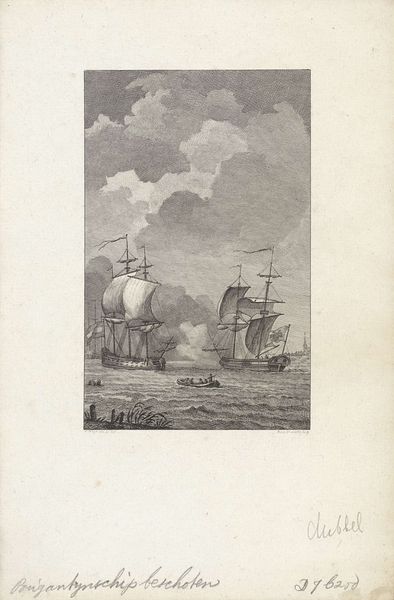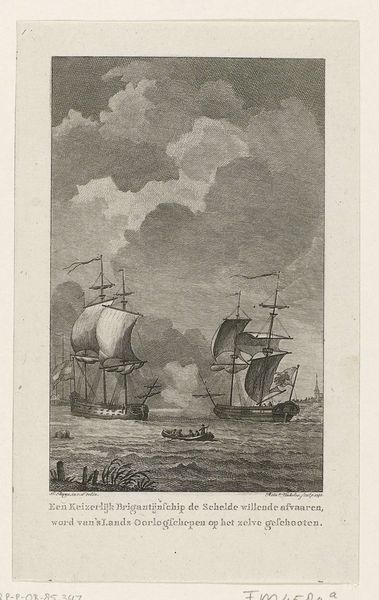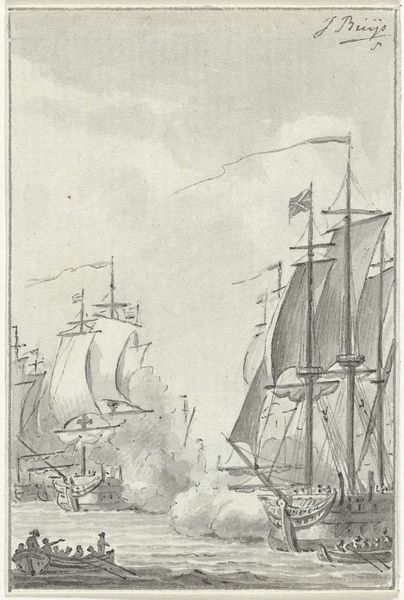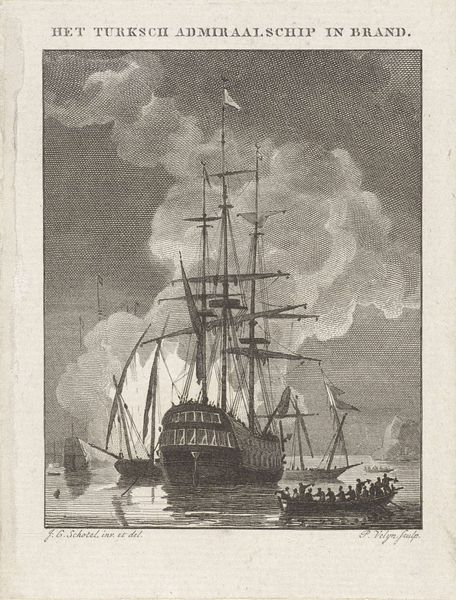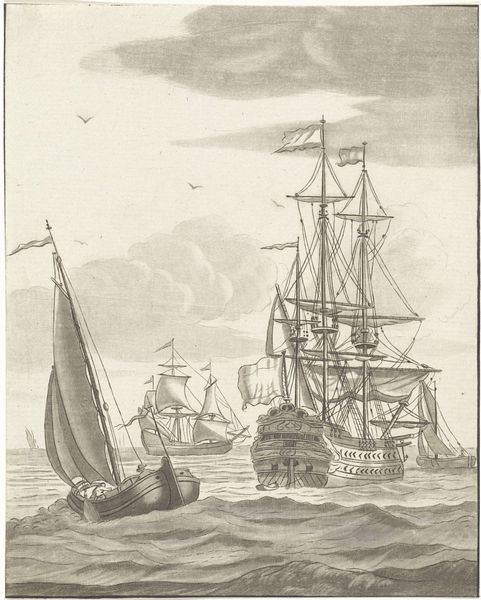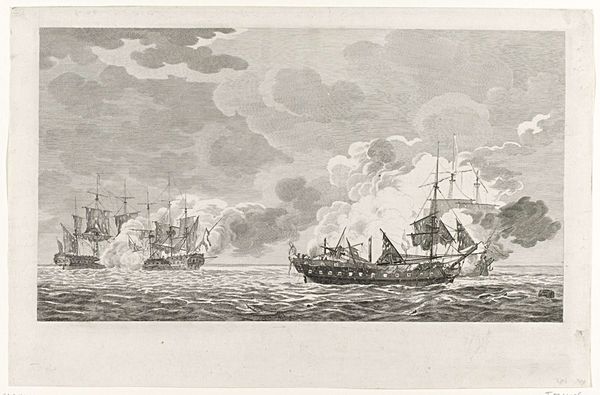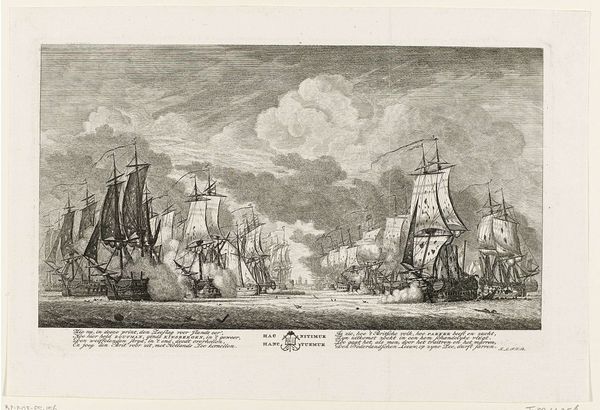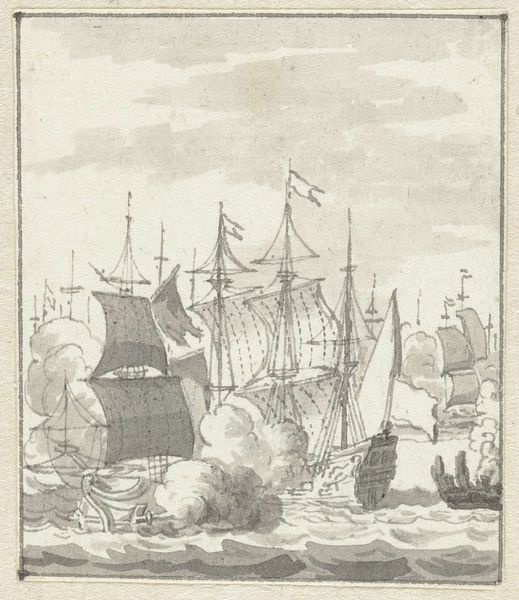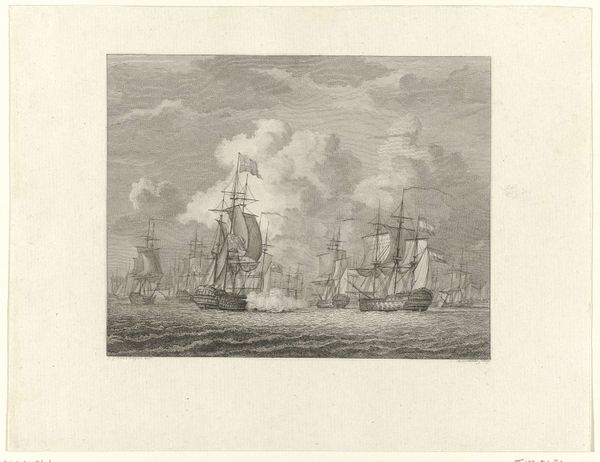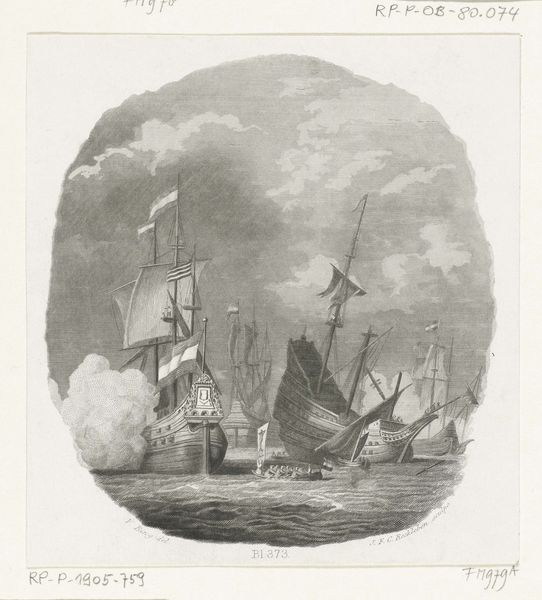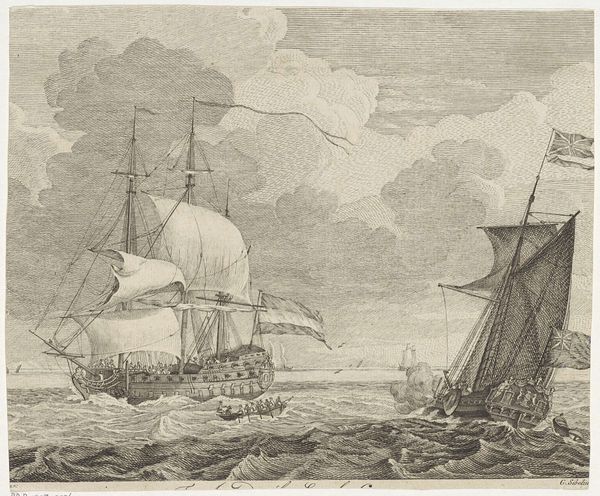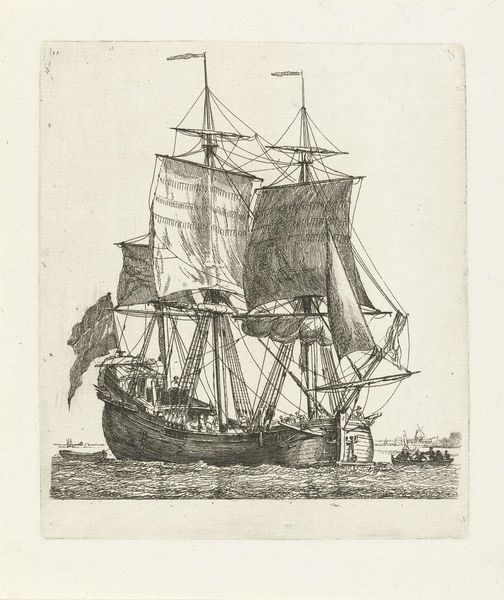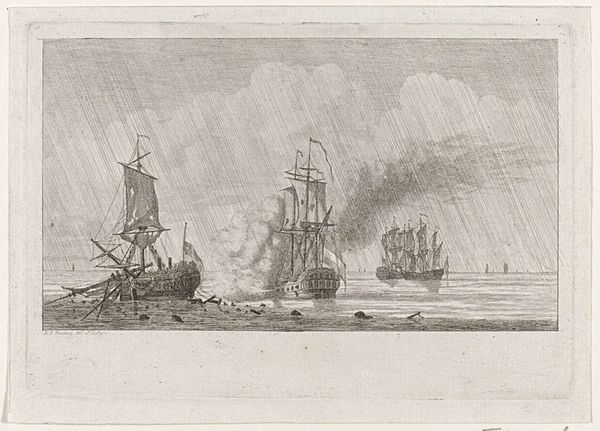
drawing, print, engraving
#
drawing
# print
#
landscape
#
history-painting
#
engraving
Dimensions: height 114 mm, width 73 mm
Copyright: Rijks Museum: Open Domain
Editor: This print, "Treffen tussen Fielding en Van Bylandt, 1779," by Reinier Vinkeles, depicts a naval encounter. It's an engraving, likely made between 1780 and 1795, showing ships in the heat of battle, complete with billowing smoke. I find the level of detail quite compelling, given it’s a print. How do you interpret this work? Curator: What strikes me is the material record it provides of shipbuilding and maritime conflict in that period. Consider the labour involved: the sourcing of timber, the skills of the carpenters, sailmakers, and metalworkers who produced these war machines. And the engraver meticulously rendering those details for mass consumption. We see a collision of high and low art; this print wasn’t intended for a palace wall, but likely for dissemination to a wide public, shaping their understanding of naval power. How does this influence its historical reception? Editor: That's fascinating; I hadn't considered the labour behind it. The fact that it was meant to be distributed widely really puts the social impact into perspective. Would you say that affects how we view it as art? Curator: Absolutely. We're not simply appreciating aesthetic beauty, but considering the social role it played, how it might have glorified or critiqued imperial ambitions. How do the economics of printmaking contribute to the spread of nationalistic ideologies? How were such images consumed and by whom? These questions get us beyond merely admiring technique. Editor: So, you're suggesting that this isn’t just a representation of a historical event, but a material object embedded in a complex web of production, distribution, and social meaning. Curator: Precisely. The choice of engraving – a reproducible medium – over, say, painting, speaks volumes. It highlights the intention to reach a broad audience and influence public opinion. This shift challenges our definition of ‘art’ by centering labor, materiality, and the mechanics of representation. Editor: That's really given me a new perspective. It’s less about the artistic skill on display and more about the broader implications. I'll definitely look at prints differently now. Curator: Good, good! Seeing art through the lens of production helps us unearth fascinating insights into society and power. It opens doors for a deeper, richer appreciation of historical materials and techniques!
Comments
No comments
Be the first to comment and join the conversation on the ultimate creative platform.
